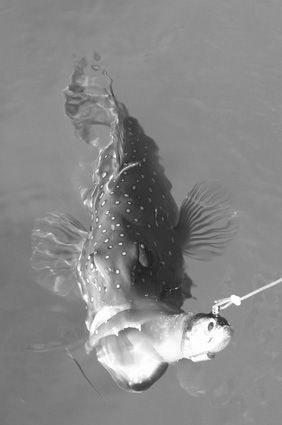The fishing in the Whitsundays is so good in June that it will make you want to jump for joy. My brother and I will explain some techniques that Whitsunday anglers should try during June.
Coral trout are an amazing fish, and landing one is always exciting. These fish can be caught using a range of methods but one of the best is fishing soft plastics around the reef covered shallows. Gloucester Island near Dingo Beach and the shallower edges surrounding Hook Island are great areas to chase big coral trout with Squidgy flickbaits. Match the Squidgys with a slow sinking resin jighead and these plastics will entice a range of shallow, reef dwelling species.
Cast this plastic over submerged reefs and rocks, let it sink and twitch it back to the boat. Tighten your drags as these fish will try to swim back under the closest bommie or reef ledge and bust you off. Use this technique when the reef and rocky flats have drained and the fish are holding off the flats and around the reef fringed edges. You will find plenty of coral trout in outer edges of reef drop-offs and big bommies.
Hooking a coral trout is sometimes the easy part – extracting them from their rough hangouts is often more of a challenge. So when you think you have connected – pull hard! Just remember that big sweetlip, emperors, trevally, queenfish and mackerel frequently show up to snap at these plastics as well.
The Whitsunday islands provide a number of sight fishing opportunities for a variety of different species. Flathead, golden and giant trevally, parrot fish, permit, queenfish and mangrove jack can all be spotted in the morning cruising the shallow crystal clear waters on a high tide. A stealthy approach and polarised sunglasses will help you catch some quality fish in this situation.
Some fish are difficult to see from above water but if you focus on searching for moving shadows, flashes from fish turning, moving fins or bait disturbing the surface you will be getting closer to finding the fish. Search areas with shallow, clear water covering a sandy, rocky bottom. Islands that have bays with shallow inlets and dense mangrove edges are the perfect areas to start sight fishing. Just cruise around these edges and cast to visible fish. If there are reefs out in the deeper waters of the bay then the shallow flats close to the shores will be even better.
The rising tides are best for most sight fishing targets as fish are usually up on the flats feeding on baitfish, crabs and juicy crustaceans. Plastics, hard-bodied minnows, flies and surface lures that look like these food sources perform well depending on what species you are targeting. If you see moving or showering bait schools travelling along the mangrove rooted edges then try and match the baits appearance to your lure.
Hot sight fishing spots are the edges of Hill Inlet on Whitsunday Island, the sand flats in Windy Bay on Haslewood Island and the small mangrove inlets around Gloucester Island.
Reads: 4824
Coral trout can be tempted with plastics around the reefy edges.




